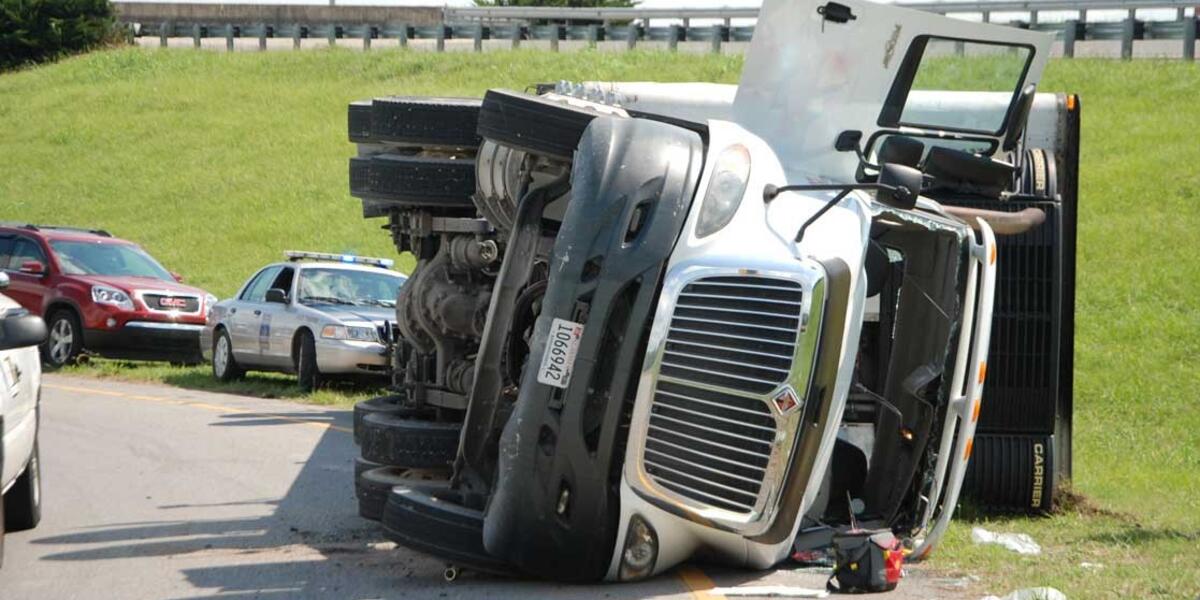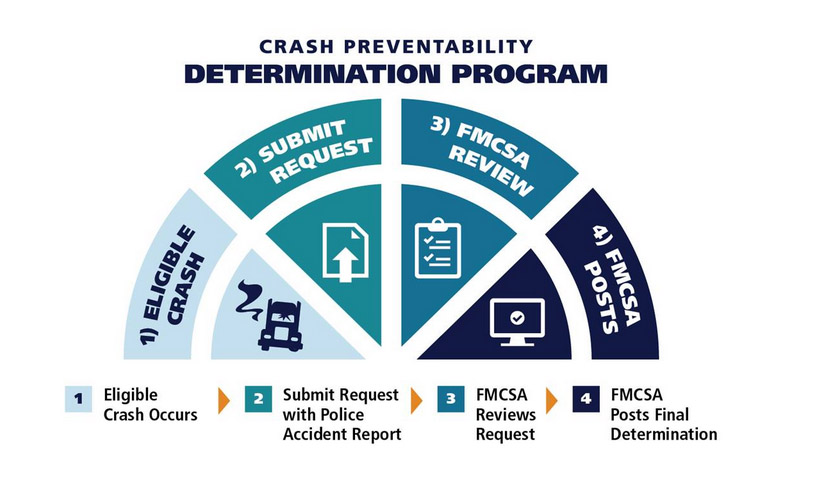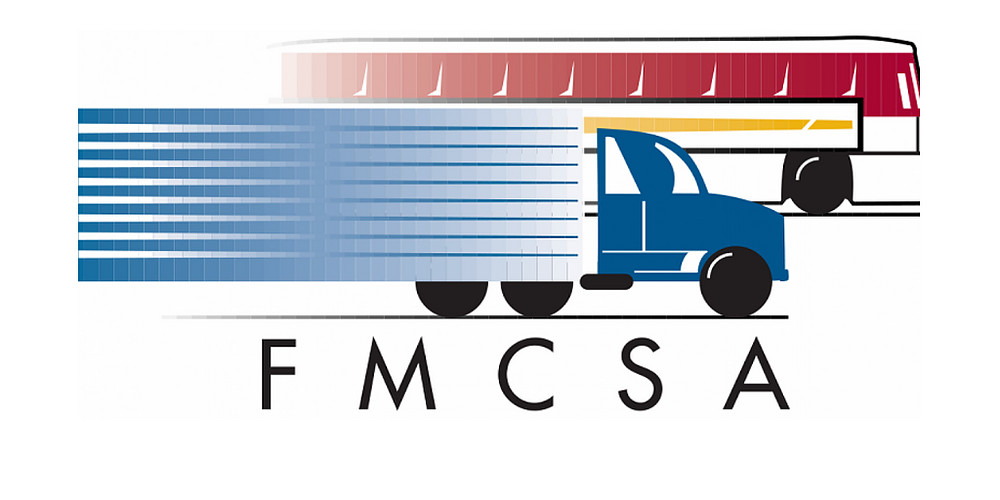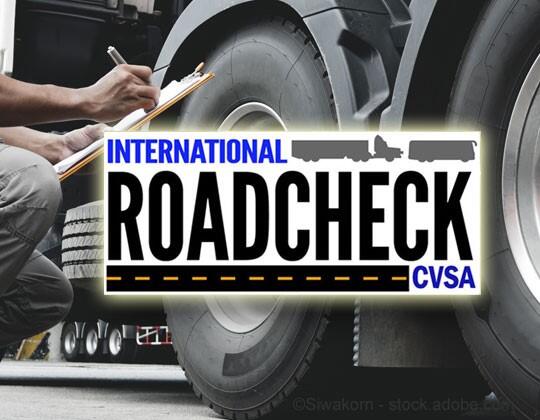Don’t forget about the FMCSA crash preventability program!
Motor carriers and drivers can challenge the preventability of certain crashes with the Federal Motor Carrier Safety Administration’s (FMCSA) Crash Preventability Determination Program. Certain Non-Preventable DOT recordable crashes can be removed from your CSA scoring if approved by the FMCSA.
How the program works
The FMCSA has identified several crash types as non-preventable. Commercial motor vehicle crashes meeting the criteria, occurring on or after August 1, 2019, are eligible for consideration under the relaunched program.
Motor carriers and drivers must use the online DataQs system to argue that their crash was not preventable.
Click Here to challenge the preventability of an accident:
To find out more about the program go to:
Crash Preventability Determination Program (CPDP) | FMCSA (dot.gov)
If a crash is deemed non-preventable, the FMCSA will:
- Remove the crash from the carrier’s “crash indicator” score in the Compliance, Safety, Accountability (CSA) system, reducing the chance they will be targeted with enforcement action.
- Add a note to the Pre-Employment Screening Program (PSP) to indicate that the crash was not preventable, reducing the odds that the driver involved would not be hired due to his or her crash history.
-
Was struck in the rear
-
Was struck on the side at the rear
-
Was struck by a motorist driving in the wrong direction, or was struck by another motorist in a crash when a driver was operating in the wrong direction (e.g., a car being driven in the wrong direction strikes another car that then hits a commercial vehicle)
-
Was struck by a vehicle that was making a U-turn or illegal turn
-
Was legally stopped at a traffic control device (e.g., stop sign, red light, or yield), or was parked, including while the vehicle was unattended
-
Was struck by a vehicle that did not stop or slow in traffic
-
Was struck by a vehicle that failed to stop at a traffic control device
-
Was struck by an individual under the influence (or related violation, such as operating while intoxicated), according to the legal standard of the jurisdiction where the crash occurred or was struck by another motorist who was involved in such a crash
-
Was struck by a driver who experienced a medical issue that contributed to the crash
-
Was struck by a driver who admitted falling asleep or being distracted (e.g., by a cellphone, GPS, passengers, etc.)
-
Was struck by cargo, equipment, or debris (e.g., fallen rocks, fallen trees, unidentifiable items in the road), or the crash was a result of an infrastructure failure
-
Struck an animal
-
Struck an individual committing or attempting to commit suicide
-
Was involved in a crash type that seldom occurs and does not meet another eligible crash type (e.g., being struck by an airplane or skydiver or being struck by a deceased driver)
Are your supervisor's of CDL drivers trained under FMCSA regulations?
Training Requirements of the Federal Motor Carrier Safety Administration
Many of you have sent me emails you received from consulting firms saying that you are required to have your supervisors of CDL drivers trained in Drug and Alcohol Reasonable Suspicion Testing. E-mails are used as “scare” tactics to get you to purchase their supervisor training courses, webinars, etc. Well, they are correct that your supervisors are required by Federal Motor Carrier Safety Administration (FMCSA). But the good news is that the FMCSA makes this training available to you at NO COST!!!
So, let’s look at what the regulations say about the training of your supervisors of CDL drivers. This applies to all motor carriers, both INTRA and INTER state.
Who is subject to the Supervisor Training for Reasonable Suspicion Testing? CFR 382.603
Training for supervisors
Each employer shall ensure that all persons designated to supervise drivers (CDL) receive at least 60 minutes of training on alcohol misuse and receive at least an additional 60 minutes of training on controlled substance use. The training will be used by the supervisors to determine whether reasonable suspicion exists to require a driver to undergo testing under §382.307. The training shall include the physical, behavioral, speech, and performance indicators of probable alcohol misuse and use of controlled substances. Recurrent training for supervisory personnel is not required
So where can I get the training?
The FMCSA has a supervisor training available in video format that can be downloaded from their website for FREE!
Click Here; Then scroll to the bottom of the page and click on the last link. It will take a while to download due to the length of the video, and the quality you choose. You can also check with your D&A Third Party Administrator to see if they provide the training.
CVSAs inspected more than 13,000 vehicles during unannounced 5-day hazmat inspection initiative
The Commercial Vehicle Safety Alliance (CVSA) conducted unannounced hazardous materials/dangerous goods (HM/DG) inspection initiative on June 21-25, 2021. Inspectors stationed in the United States, Canada, and Mexico inspected more than 13,000 vehicles throughout the five-day initiative.
The three most common violations found during this initiative were non-bulk/small means of containment packaging violations, shipping papers violations, and placarding violations. The least common — but most dangerous — violation identified was package integrity (leaking) violations.
During the five-day initiative, enforcement officers sidelined any vehicles and drivers with any out-of-service violations, including HM/DG. These drivers and vehicles were not allowed to resume travel until the violations had been corrected.










